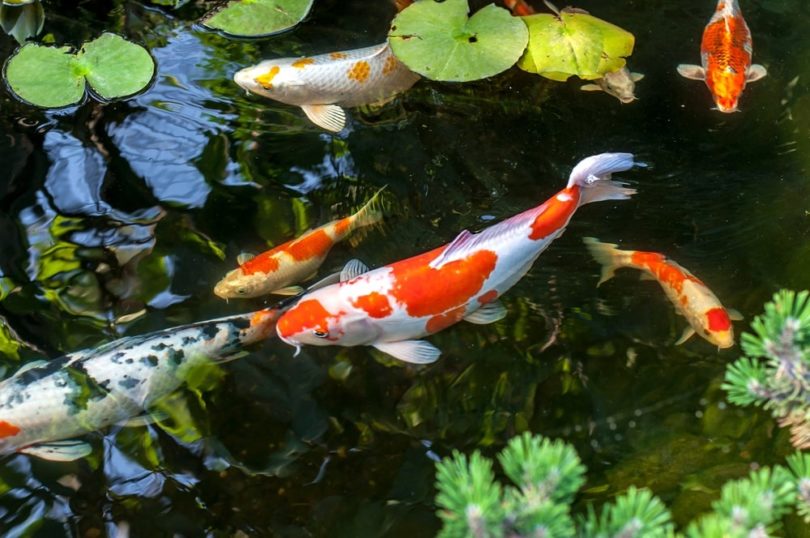Adding a new pond to your landscaping is a fun and attractive investment. If you’re a fish lover, watching them swim around your backyard pond is a great way to be around aquatic life without having to spend a lot of time caring for them and cleaning their water. Whether this is your first time designing a pond with fish in it, or you’re simply looking for some fresh inspiration, there are quite a few species that thrive in outdoor conditions.
Ponds are obviously affected by the weather, and you’ll have to find fish that are able to withstand these harsh conditions while still being a beautiful addition to your home. The right fish also depends on the water depth, winter conditions, water quality, pond size, and more. Regardless of the space that you’re working with, here are some top contenders for fish to keep in your backyard pond.
The 15 Best Fish to Keep in Outdoor Ponds
Not all fish are meant for the outdoors. While some of these fish varieties might seem obvious, some could surprise you.
1. Goldfish
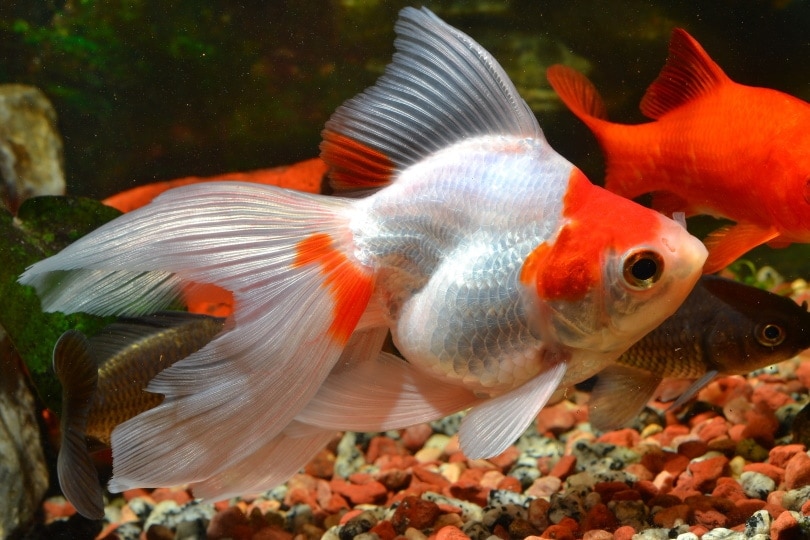
We think of goldfish as the pets we bring home after winning them at the fair and put them in a big, glass fishbowl full of water. While they are excellent house pets, they are an even better choice for a backyard pond.
Goldfish are extremely hardy fish and survive in a wide variety of conditions. On top of that, they are very low-maintenance and get along well with most other fish species. Because goldfish come in so many fun colors, they’re also a great way to brighten up your backyard. They are usually better suited for smaller ponds, but large groups of Goldfish survive just fine in larger ones. Some can even grow up to 12 inches long and live for over 10 years in the right conditions.
Choose Goldfish to add to your pond if you live in an area with cold winters. These fish tolerate low and freezing temperatures. They like to stick to an herbivorous diet, but they aren’t picky when it comes to a meal. As long as they have greenery and a few hiding spots, Goldfish are happy to live in an outdoor pond.
[sc name=”ttag-outdoor-goldfish-mention”][/sc]2. Koi Carp Fish
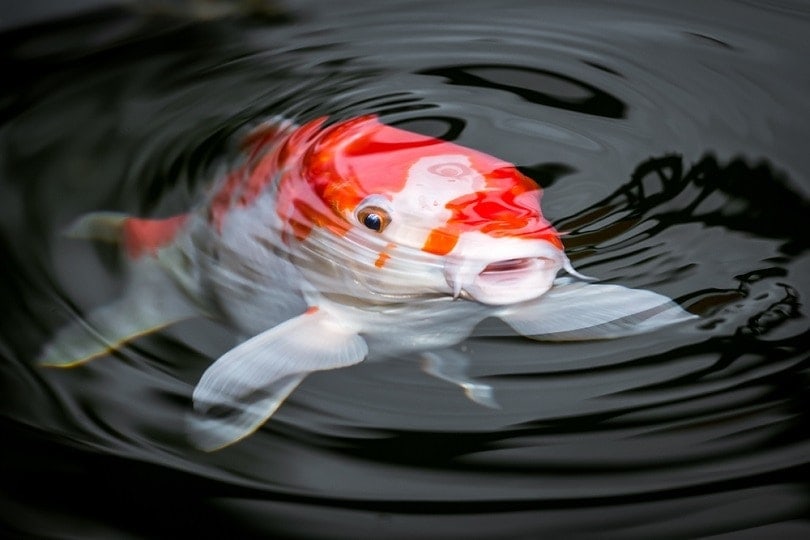
We love the look of a koi pond in the garden, and these fish are another popular choice for those who plan to install one. Koi Carp are tough enough to survive in freezing waters, and their multitude of colors makes them decorative. Although they originally come from Japan, they are presently found all over Asia and Central Europe in the wild. You can find them for sale as pets almost anywhere around the world.
Keep in mind that just because Koi Carp are fine in freezing water, they don’t necessarily love long winters where the temperatures are consistently below freezing. Refrain from buying them if your area experiences extreme winters.
3. Sterlet Fish
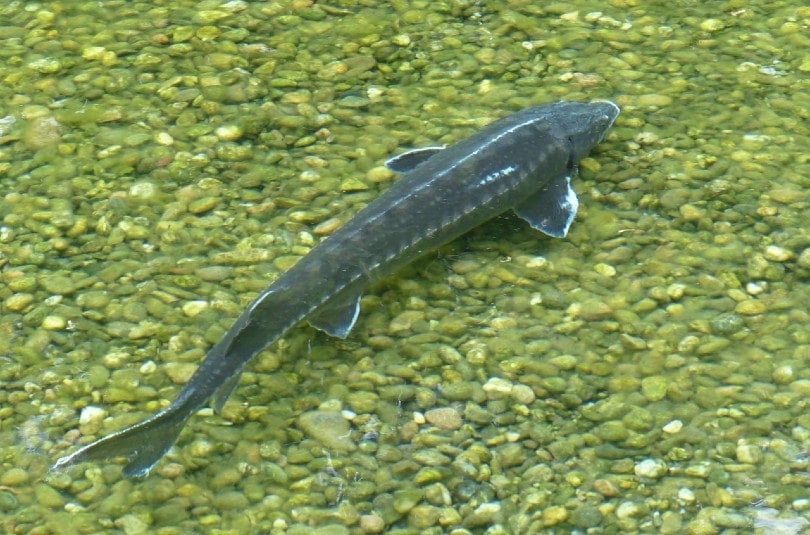
The long bodies and pointed noses probably look familiar to you, and that’s because the Sterlet fish are a subspecies of the Sturgeon. These fish are well-adapted to colder areas since their original habitat is Siberia and the rivers there that flow into the Azov, Caspian, and Black Seas. Unfortunately, their natural habitat is becoming too polluted and overfished, so they’ll soon become an endangered species.
Because of the Sterlet’s hardy nature, they make a good choice for almost all ponds. Their color is less impressive, but they make up for it with their uniquely-shaped black bodies with white stripes and barbels on their lips. If you do decide to keep them in your pond, make sure that they have the right food since they can’t always digest some of the proteins found in most commercial fish food pellets.
4. Weather Loach
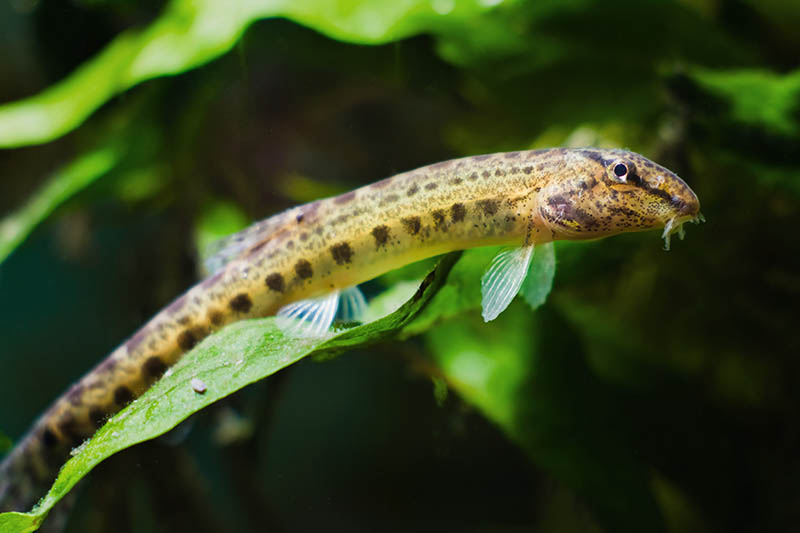
The Weather Loach or Pond Loach is one of the first domesticated fish species in the world and the most common choice for backyard ponds. They are bottom feeders that float around the bottom. They are an interesting choice because some say that they are a predictor of bad weather. The Weather Loach behaves erratically before a big storm comes in. Despite this behavior, they are friendly fish that usually keep to themselves and survive longer than 10 years in a pond.
5. Red Shiners
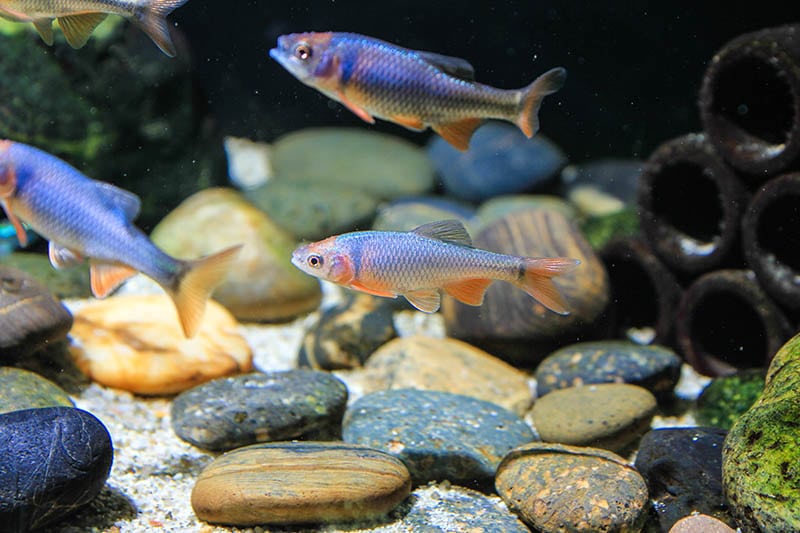
Red Shiners are some of the smallest fish you’ll want to put in your outdoor pond. They only reach 3 inches in length and tend to stick to groups. You’ll want to add small fish like these to your pond because they are a good food source for other fish and are capable of adapting to nearly all environments.
6. Plecostomus
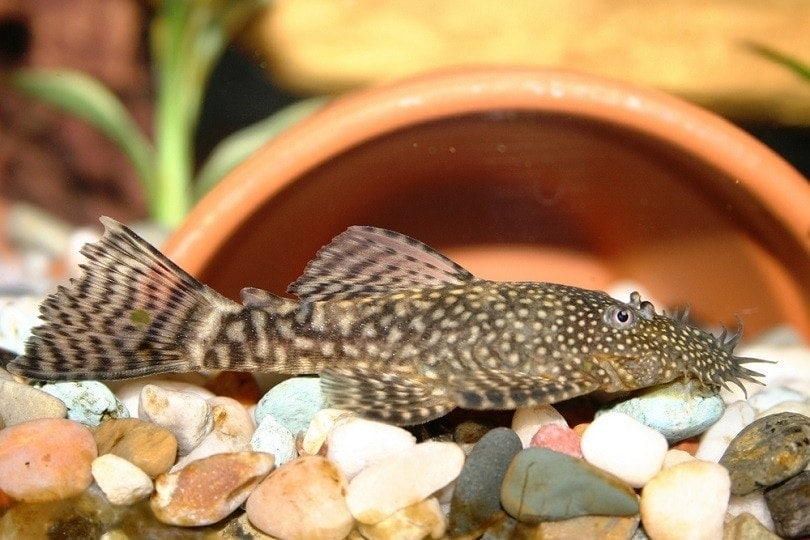
These fish, more commonly called Plecos, are a species of catfish. They are exciting to view with their patterned fins and bodies. They are mainly native to South America, but some southern states are adding them to their domestic ponds. These fish are nocturnal and move a lot at night and hide under rocks during the day. They do better in larger ponds, but that doesn’t mean they won’t fare well in smaller ones too. One benefit to adding Plecos to your pond is that they use their suckermouths to eat algae.
7. Fathead Minnow
The Fathead Minnow is another small species. They are native to North America but have recently been introduced to other areas like Canada. The Fathead Minnow is usually sold as fish feed, and they aren’t the most exciting fish to look at. Fathead Minnows have dull grey bodies with dark stripes on the side and belly. These minnows only grow up to 4 inches long.
Aside from feeding other fish, this species tolerates many different water parameters and can be kept in ponds of all sizes. They survive in extreme weather and low-oxygen water that other fish can’t tolerate. Fatheads are also easy to breed, so you’ll always have a healthy supply of food for your larger fish.
8. Golden Rudd
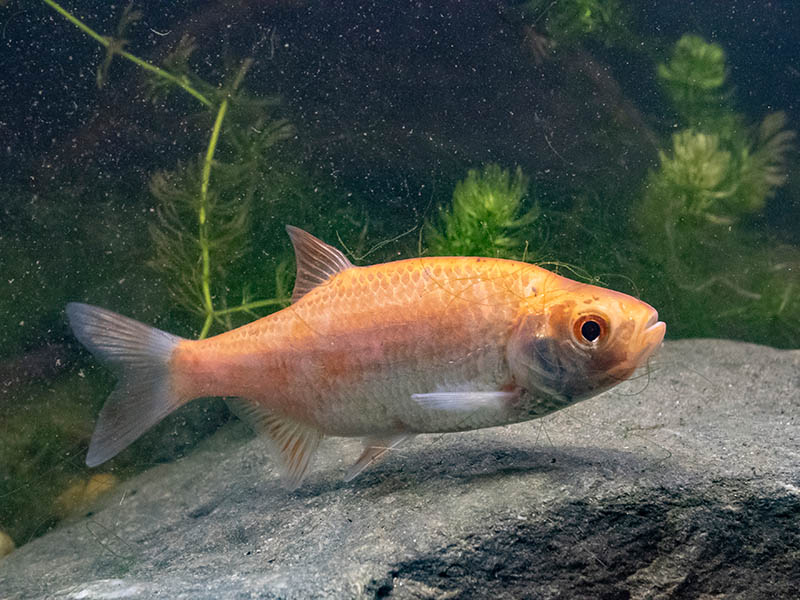
Another name for the Golden Rudd is the Rosette Pond Fish. The Golden Rudd is a sturdy fish that doesn’t get ill frequently. These are some of the best fish to use for surviving harsh winters, and they are more interesting than others, with bright patches of red and gold on their fins. Golden Rudds tend to live 15 to 20 years and get along well with other fish species.
9. Golden Tench Fish
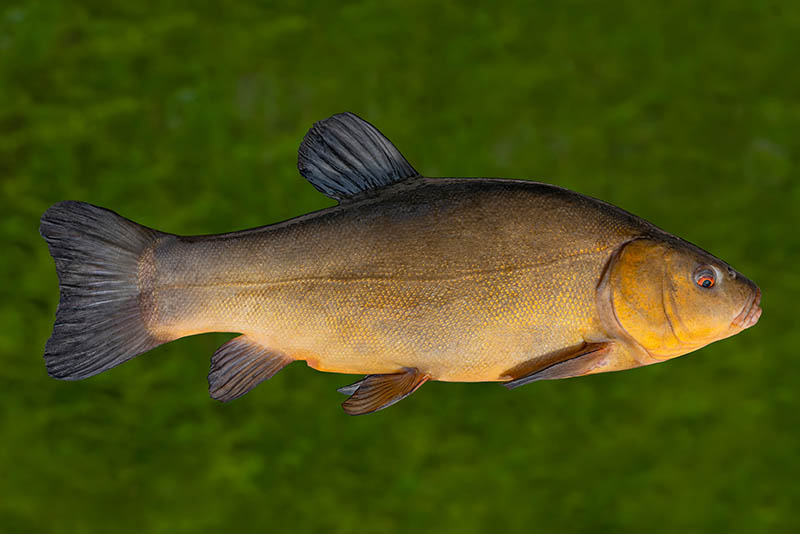
The Golden Tench fish is one that has been bred artificially for years and closely resembles a goldfish. The best thing about Golden Tench fish is that they rarely catch diseases or become ill. They spend a lot of their time scraping the bottom of the pond for food. They like to live in groups of at least five fish.
10. Orfe Fish
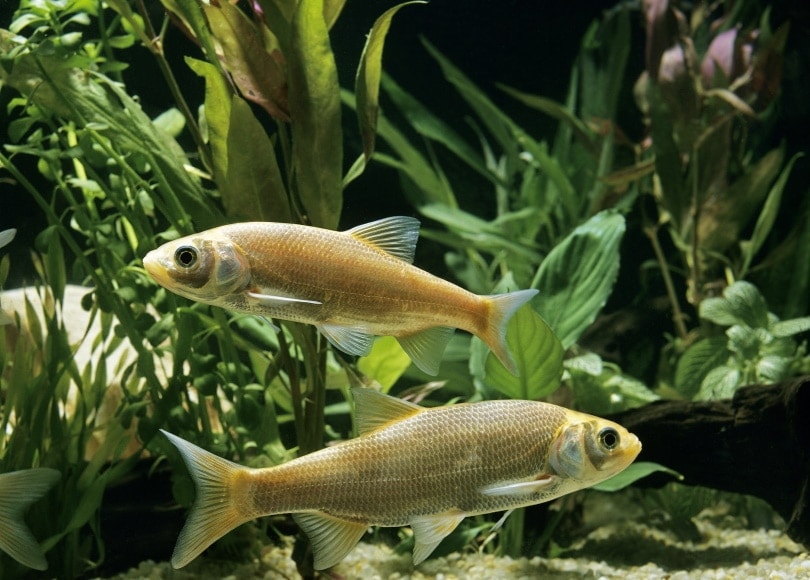
If you have a planted pond full of beautiful greenery, you want a fish that won’t interfere too much with them. That is where the Orfe fish comes in. They are active swimmers that stick around the surface and weave their way through plants. They originated from Europe and reach up to 24 inches long and weigh 8 to 9 pounds. Under the best conditions, the Orfe fish usually survives for 20 years and is able to handle cold winters if the pond is at least 3.5 feet deep. Because they require a lot of oxygen, you’ll have to keep a pump or water fountain in your pond.
11. Pumpkinseed Fish
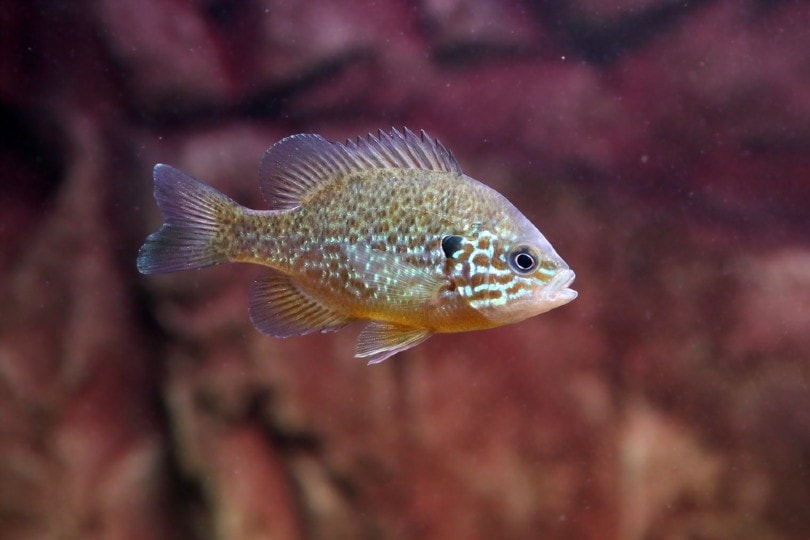
The Pumpkinseed fish is a freshwater fish that people catch for sport. It gets its name from the pumpkinseed-shaped spots on their bodies. They also have red and orange coloring near their gills. Pumpkinseed fish are native to lakes and ponds all over the United States, but they are most popular in Florida, North Carolina, Missouri, and Illinois.
12. Gobi Fish
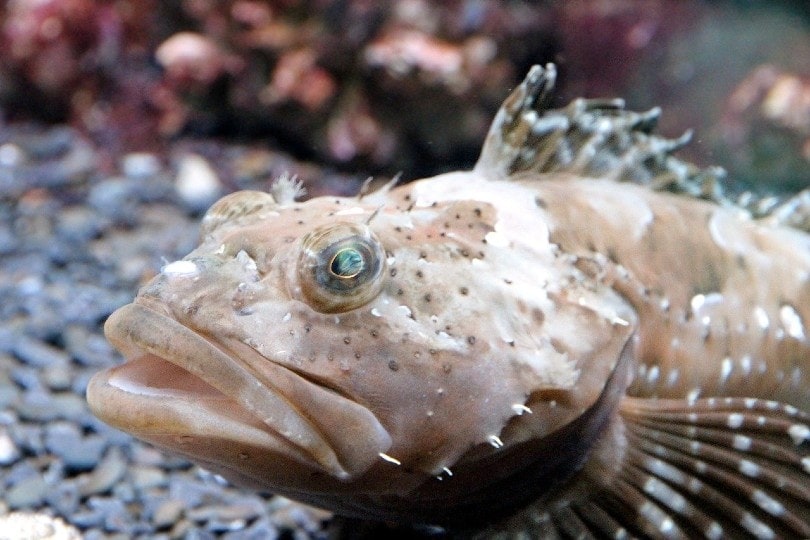
The best algae eaters on the market are Gobi Fish. Although they love eating algae, they are omnivores and also snack on insects, worms, and snails. These fish only live 5 years and grow up to 6 inches long. They prefer to live in fish schools of at leaves six fish, but you’ll want at least eight fish if you plan on breeding them. You won’t see them very often since they live on the bottom of the pond, but that’s okay since they only have a dark brown color to them.
13. Grass Carp
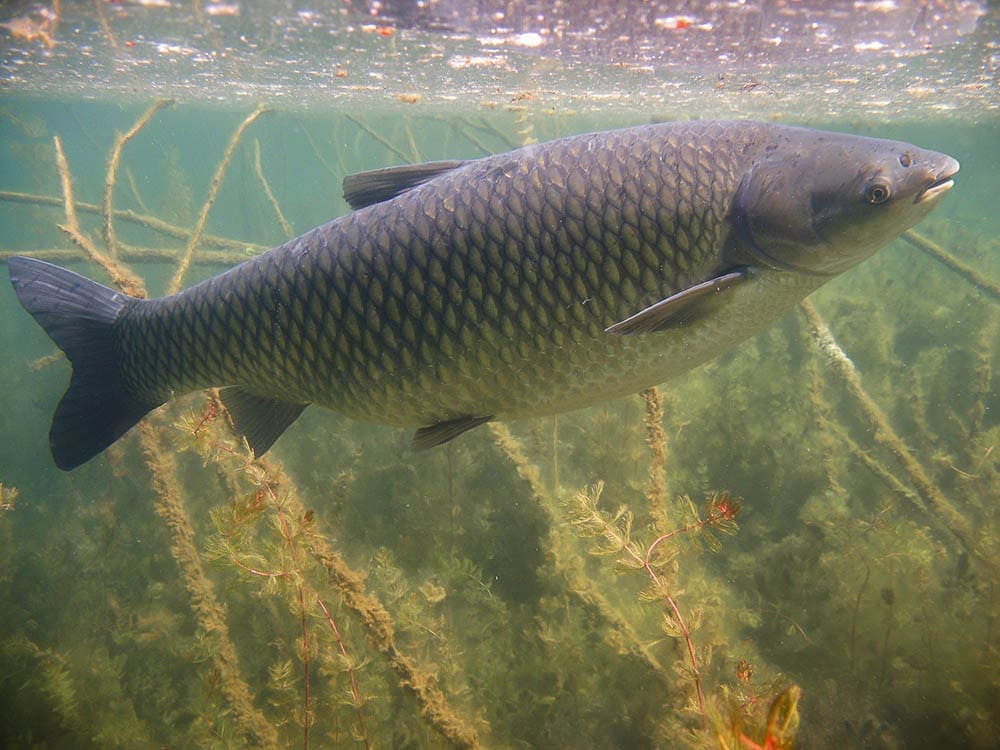
Another common fish that people choose for a backyard pond are Grass Carp. They are great fish for weed control and eliminating excess vegetation. Although they live in rivers in the wild, they can survive stagnant waters too. The average size of a Grass Carp is about 30 inches long.
14. Rosy Red Minnows
If you’re looking for more colorful fish, you might think about buying some Rosy Red Minnows. These are small fish, but there aren’t a lot of predatory fish that enjoy eating them. That way, you can keep some of the small fish around and enjoy their colorful bodies as they dash through the water.
Try not to buy these minnows from places where they are sold in bulk because they usually end up carrying diseases when kept in such close quarters. Even though they are good pond fish, they aren’t suitable for regions with extended periods of cold weather.
15. Sticklebacks

Stickleback fish come in various sizes. Most people prefer to keep them in their ponds because they are good at adapting to their surroundings. The biggest benefit to them is that they are suited to survive freezing conditions and can be kept in ponds all over the country and all year long.
How Do you Care for Fish During Winter?
The most crucial part of having a pond full of fish that makes it through the winter is ensuring the pond is deep enough so that it won’t completely freeze over the winter. This isn’t possible for every pond. The best way to prepare for winter is to make preparations in the fall. Clean up your pond before winter and get rid of all fallen leaves and debris inside of it. Once the water freezes, the leaves trapped reduce the space that the fish have to swim. Do not overfeed your fish during the fall, so there is less waste and feces produced in the winter.

Conclusion
Filling your backyard pond up with fish is an exciting adventure. Even though there are several choices, you can pick ones that are going to do well in that environment with the fish that are going to be around. As long as you care for your fish properly, there’s no reason why you can’t have a successful pond, regardless of where you live.
Featured Image Credit: Vital Safo, Shutterstock
